- Kitchens
- Design Ideas
- Cities
- Trends
- Guides
- Price Calculators
- Our PortfolioNEW
- More
- Home
- Trends
- Furniture And Decor
- Indoor Plants
- Indoor Succulent Plants Indp
Indoor Succulent Plants Care & Grow
Are you longing for indoor greenery but can not keep up with the house plants? Then go for succulent plants. Though growing succulent plants can be a bit tricky, with minimal effort, care, and these tips, you can grow and care for your indoor succulent plants that grow in any condition of the area with ease.
Table of Content
Do not underestimate the power of succulents. These succulent plants can match the vibe of your living room and its modest requirements with the humble pleasure that can be found in the indoor cactus plants even when you are less prepared.
Succulents are not just outdoor plants anymore. They are gaining popularity and trending over gardens, homes, and occasional decorations as well. If you are a person who is always on the lookout for plants that can survive in low maintenance, then indoor succulent plants are the perfect choice for you.
Even though succulents are low maintenance and have long lifespans, it is important to learn how to care for indoor succulents to keep them healthy and happy.
Types Of Succulents
The word 'Succulent' comes from the Latin word sucus, which means juice or sap. These plants have fleshy, thick leaves and swollen stems that store a good amount of water. These help the succulents plant to survive with limited water resources.
There are many species and cultivators of the plants and species, including several plant families. Some associate these plants with the cactus family. Also, all the cactus are succulents, but all the succulents are definitely not cactus.
However, these plants have long lifespans and are simple to maintain, but they still have different preferences depending upon the location. To make you understand the different types of succulents (more than 150), we have composed a list of the five best types of succulents that can be easily found and are low maintenance.
Paddle Plant (Kalanchoe Thyrsiflora)
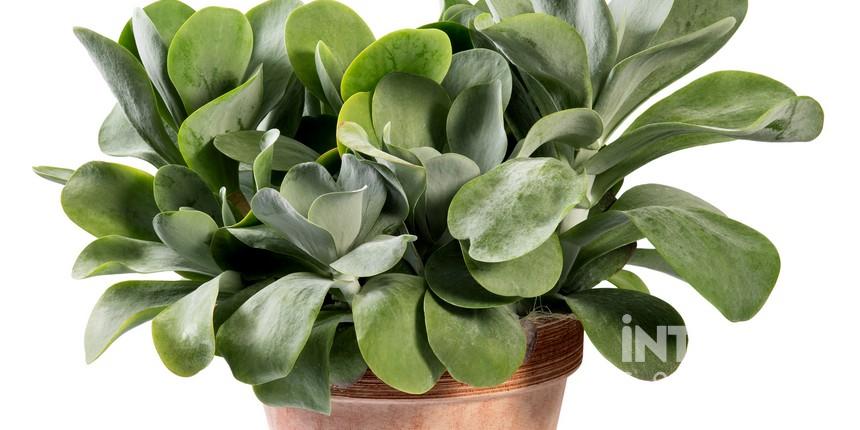
This succulent plant is 1 foot tall and wide in size with bright colors. With its whimsical form and intense winter color, it became one of the most popular succulents of the time. The pancake-like leaves are flat and layered into an odd rosette when blooms elongate the central stem into gangly white stalks. This plant best grows in bright shade.
Donkey's Tail (Sedum morganianum)

The one-foot wide and 2 feet tall plant, Donkey's Tail, grows best when kept under bright shade. Keeping these plants, usually in a hanging basket, ensures perfect drainage. When you show a children Donkey's Tail, they will most likely pinch the plant because of its vine-like shape. Though this plant is most likely to grow in bright shade away from the winds, it is not a heat lover.
Firesticks (Euphorbia Tirucalli 'Rosea')

This succulent plant grows well in full sun and grows up to 3 feet tall and two feet wide. The red kind of succulents has a fine texture with vivid hues for winters. The reduced chlorophyll in the plant resulted in red color and kept the plant small by stunting its growth. It is one of the most tolerant succulents to ordinary soil, unlike other succulents.
Spider Aloe (Aloe Humilis)
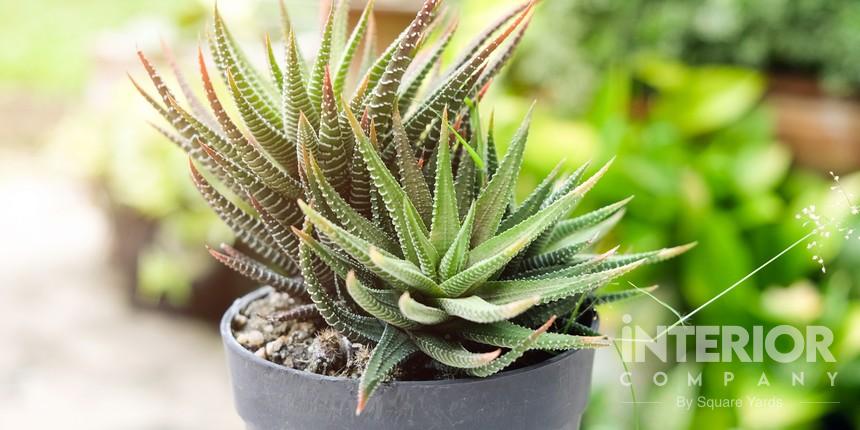
Spider Aloe is fat and stubby succulent aloe, 4 to 5 inches tall and wide in size. It is the perfect hand-size plant that can be kept in a low, wide bonsai pot. Topped with tubular, coral, and red blooms, a foot-long spike emerges during the spring season, found irresistible by the hummingbirds. The toothy leaves are thick and stiff, maintaining the precise form of the succulent plant all the time.
Echeveria (Echeveria spp. and cvs.)
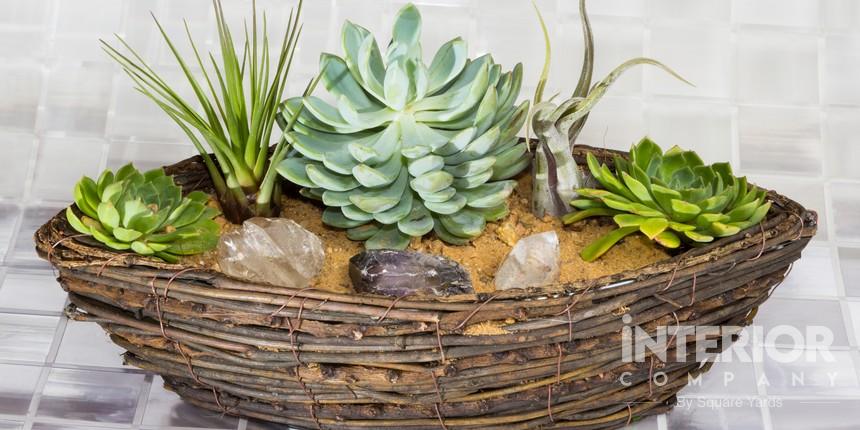
Echeveria is a collection of truly stunning succulents. They are 3 to 4 inches wide as well as 1 to 2 inches tall. It grows best in full sun to light shade spending upon the species. Echeveria is available in different color hybrids, making them the perfect plant to pair up with glass gravels for potted specimens. They also look equally astonishing in the landscape placement.
Types Of Indoor Succulents
Succulents are trendy for a number of reasons, and being an indoor plant tops the list. They can grow alone as well as grow nicely when paired with other plants. With the diversity of shape, size, and color, succulents offer a perfect fit and blend to the interiors of your home, office, or children's room.
When it comes to indoor succulents, it grows best at room temperature with a little humidity and the place where it is dry. Though these indoor succulent plants like sunlight, they can easily adapt to the low light, making them the perfect green choice for home decoration. With all the information, we have secured a list of types of indoor succulents that are easy to maintain.
Crown Of Thrones (Euphorbia Milii)
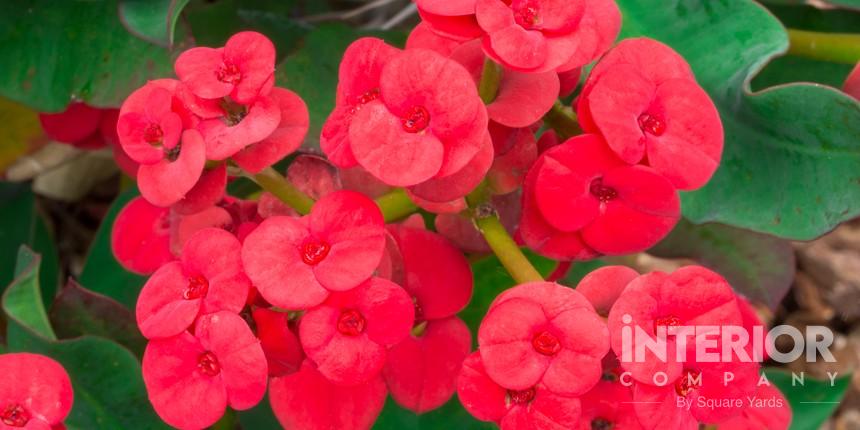
The Crown Of Thrones or Christ Plant is a succulent plant that can grow all year round, making it a great succulent house plant. It can handle the humidity and likes to grow at the same room temperature as humans.
It is a slow-growing plant that can grow up to 3 to 6 feet tall when planted outdoors. But as a houseplant, it can grow up to 2 feet in height. It needs well-drained soil for the thick, green leaves to grow along the new stem. Red, white, yellow, orange, and pink are the colors of its flowers.
As a succulent, it is very forgiving about water but needs well-drained soil. Do not let the plant sit in water or extremely wet soil, as the root can rot. Half a day of sunlight is one of the major requirements for these succulent house plants. Feed these indoor succulents with appropriate and proper houseplant fertilizer from spring through fall.
Avoid watering the soil if it is wet to dodge problems, such as fungal diseases like leaf-spotting, root rotting, and botrytis for succulent care indoor.
Jade Plant (Crassula Ovata)

The Jade Plant is quite similar in terms of growth and care to a bonsai plant. The thick trunk of the indoor succulent plants has branches that are similar to a miniature tree. As Jade plants are going to be indoor succulents, you need to find the brightest spot in your home. Even if you place them under direct sunlight, they are not going to burn.
Jade plants can handle the direct rays of sun streaming through windows. Also, if you place them where they get only a little bit of sunlight, they will not flourish but will definitely grow a little.
As the Jade plants are your succulent house plants, they can hold water in their stem and need watering after every 2 to 3 weeks. If you see blisters forming on the leaves, it is best to ease up on water, controlling the frequency and amount.
After a month of planting, feed these Jade succulents with succulent plant food that will give them the right amount of nutrients and help them to grow beautifully.
Pincushion Cactus (Mammillaria Crinita)

The Pincushion Cactus belongs to the family of Mammillaria that includes 250 species of cactus. It is a cactus succulent as all the cactuses are succulents. Growing this succulent as an indoor cactus is quite simple and easy for beginners.
Keeping the cactus inside your home is easy, and the cactuses usually live in dry conditions and limited fertility. Similarly, these indoor cactus plants will need gritted and well-drained soil. Also, the soil needs to dry out in between the watering sessions to avoid rotting the roots.
This small cactus plant for indoors needs optimum heat along with water conditions. It will also bloom beautiful flowers in the spring season after meeting the right living conditions. You can also provide them with extra care by adding plant nutrition in early springs for beautiful blooms.
Snake Plant (Sansevieria Trifasciata)
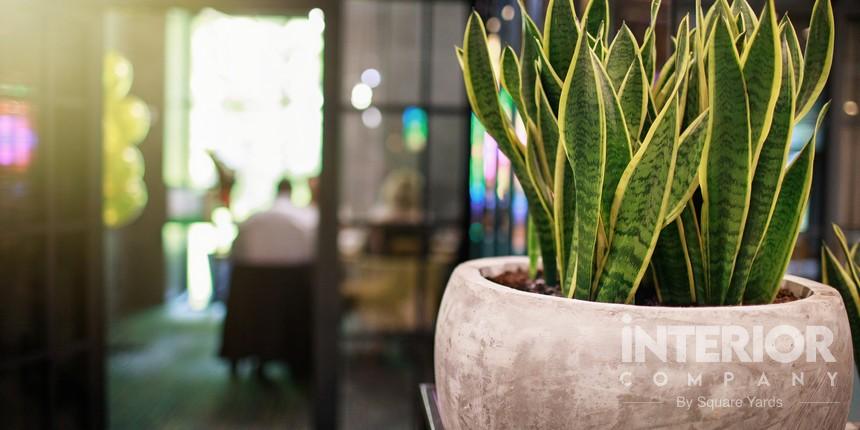
Snake Plant succulent is going to slither right into your heart as it is one of the easiest succulents to cultivate. You can neglect it for days and still find it pretty fresh. You can add snake plant succulent to your office space for a bit of greenery in the darker corners. These succulents need a little light to thrive.
Extreme sunlight can burn its leaves. It can also grow outdoors under the shade with appropriate light for growth. Plant the snake plant succulent in the plastic pots with drainage holes with the size 1/4th of the root ball of the plant. Why plastic pots? The roots of the plants grow aggressively and can break the terracotta pots.
Let the soil dry and water the plant after every 2 to 3 weeks. Also, after a month, add some extra nutrition to the snake plant succulent in the form of fertilizers for growth.
Medusa (Astrophytum Caput-Medusae)
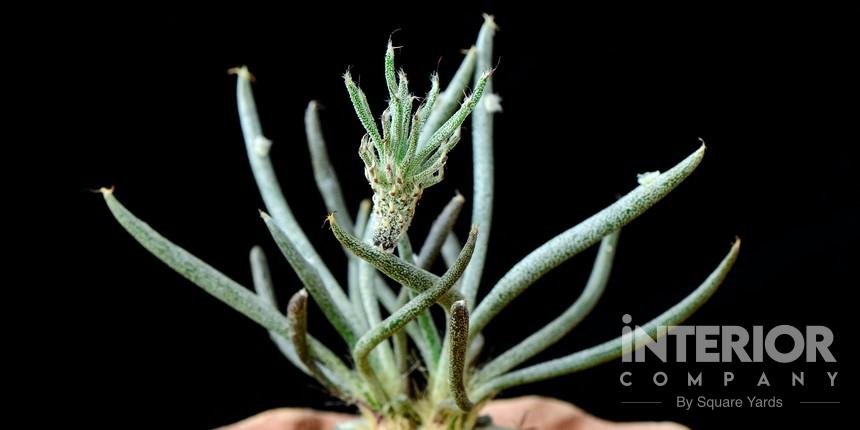
These indoor succulents benefit from proper regular moisture during the summer season. It will not tolerate drought for a long time and needs watering at least once a week. Use water-soluble fertilizers for feeding the plant with nutrients.
Well-drained soil is a must for this cactus inside your home. Along with well-drained soil, it also needs six hours of direct sunlight for growth.
Low Light Indoor Succulents
If your home or office lacks sunlight, it is not something to worry about anymore. Yes, not every succulent needs bright and full sunlight. Some of the succulents are easy-going and can grow in low light behind the locked doors. But no succulent is going to survive with the complete absence of sunlight. Some of the indoor succulents need a good amount of light or full light, while some may need low light.
Also, you can buy a table lamp to avoid the complete absence of light. Here is a list of the best types of indoor succulents that can survive in low light inside your home and office.
Aloe Vera

One of the most beneficial and easy-going among the different types of succulent house plants is Aloe Vera. It grows in partial shade and does not require much water. Hence, you can grow it inside by watering it on a weekly basis.
Holiday Cacti
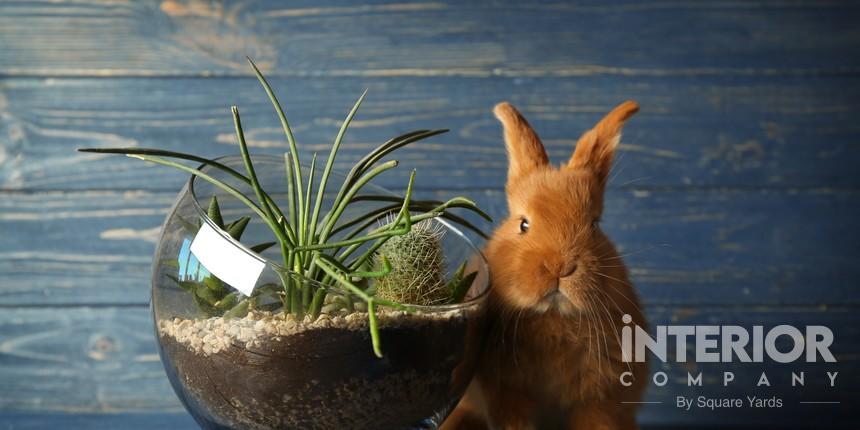
Cactus house plants are a big yes when you thrive for greenery in your home or office. One such indoor cactus is Holiday Cacti. Among all other indoor cactus types, this cactus needs partial light and moderate watering for growth. You can water it once every one or two weeks.
It gives regular flowers if you take care of them properly and feed them with an adequate amount of nutrients on a regular basis.
Rhipsalis
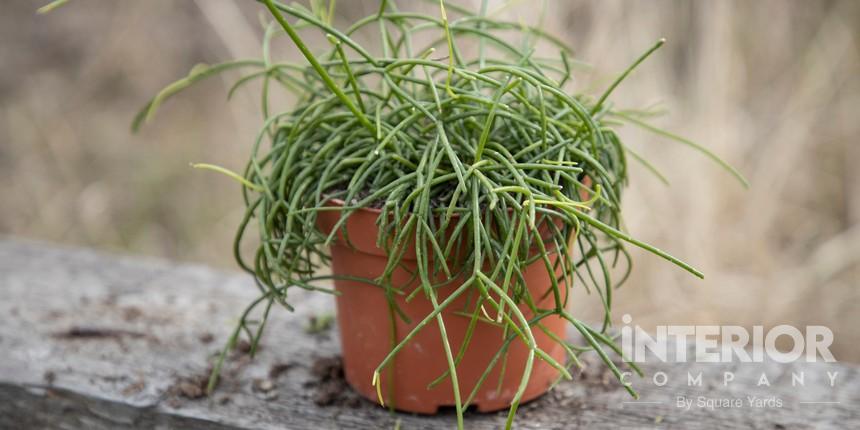
Rhipsalis are other small cactus house plants that need a limited amount of light. This indoor cactus can grow both in full light and partial light. Also, you need to maintain a moderate amount of moisture in the plant for it to grow properly. The love for humidity makes it suitable for bathroom setup.
Succulent Plants Online
You can find these indoor succulents on several websites, but it is better to go to a nursery yourself. Finding the best indoor succulent plants yourself can give you a whole new experience. Also, you get the freedom of choosing the plants after feeling the physical features.
The market is full of small cactus plants for indoors, and you can choose your favorite one. The cactus house plants can give you a first-hand experience of owning and caring for cactus succulents.
If on the online platforms, you can find a wide variety of indoor cactus plants and other succulents at a genuine rate. If you can not find the different types of indoor succulents, you can choose to go for the online platforms.
Succulent Potting Soil
Potting soil is an important factor that you need to consider while buying a succulent. The best succulents for indoors can only thrive in good potting soil. Focusing on little details for succulent care indoor is important for everyone. It can help a lot in keeping these indoor succulent plants happy and healthy.
You can not use the regular soil for succulents. The regular soil has the tendency to hold water for plants. But the succulent potting soil should have the tendency to dry out the pot easily. If the soil does not dry out, it can cause several problems such as root rotting and other fungal infections for succulent house plants.
The succulent soil mix should encourage the exit of moisture from the pot quickly and easily. For this purpose, you can use pre-mix succulent soil mixes or make your own succulent potting mix. Mix coarse sand, perlite, turface, pumice, and coconut coir to make your own succulent care indoor soil.
Best Succulents For Beginners
Are you a beginner in the area of succulents or plants? No worries. We have the solution for you. We filtered the list of succulents to find the best beginner-friendly succulents for you. Indoor cactus plants and other indoor succulents need little attention. The appealing feature of these succulents will keep you hooked for a very long time.
Jade Plant, Aloe Vera, Echeveria, Panda Plant, Zebra Plant, Crown Of Thorns, Agave, Crassula, and Faucaria are some of the best beginner-friendly succulents. These are some of the best succulents for indoors that need watering once every two or three weeks. Some of these might need full light, while others need shady light to grow in the indoor environment.
The beginner-friendly succulent house plants can boost your confidence with their presence in your space. These are some low-demanding indoor succulent plants that you need to discover. You might have failed at planting a plant in your home but with our selection of succulents earlier. But you will surely be able to add a pop of green and harmony to your home.
How To Know My Succulent Plant Conditions?
It is easy to identify if your succulent is happy and healthy or not. If you find any of these signs in your succulent plant, that means your succulent needs your care and attention to be happy again. Whether they are indoor succulent plants or outdoor succulents, these signs apply to both.
Etiolation
It is a condition in which the succulents grow, stretch out, and become pale without an adequate amount of light. They grow out in search of light when not provided. These succulent plants may be healthy but can not be aesthetically appealing as you were thinking. Once the etiolation occurs, you can not change that.
Stress
Yes, plants can get stressed too. For plants, stress comes from their lack of nutrients, water, and light that are not ideal for succulents. The leaves of these plants can turn red, or sometimes the whole leaves might change colors when stressed. Stressed succulents will not immediately die and need to be moved to a different location or need extra care.
Physical Damage And Sunburn
The injuries on their body, such as squirrel feasts, animal bites, dropping the plants, or knocking them, can cause physical damage. You can prevent these damages by caring for and planning the environment of the succulents. This way, the plants can bounce back to their healthy and happy self.
Some plants may need full light, and some do not. The plants that are sensitive to full light can get burnt. Hence, it is important to know about your succulents beforehand and place them in the right place to avoid sunburns.
Here are some signs that tell us that both the indoor cactus plants and indoor succulents, along with the outdoor cactus and other succulents are happy.
Healthy Roots
If you water the plant when it is needed, the roots will be healthy. Some succulents need water once a week, while some once in two weeks. Put these plants in the right soil and pots with holes to maintain healthy roots.
Firmness
When the plant is hydrated (the moisture is locked in its stem and cell), you will feel firm when you touch them. It will indicate that your succulent is happy and the watering method is working.
Face Lift
When you water the plant, you might have noticed that the plant has a facelift which means the wrinkles disappear. The plant becomes upright after it is hydrated, and the hydrostatic pressure is regained on watering.
Soil And Watering
The juicy plants will look happy when they meet the right soil and water conditions. Generally, these plants grow in porous potting soil and water saturation throughout the pot. You should keep a close eye on the plant for watering and soil conditions to match their needs.
Sunlight
Another giveaway of healthy succulents is sunlight. Excessive heat can cause sunburns by changing the color of the leaves. If there are any black or brown patches, restrict the amount of direct sunlight for the succulent plants.
Ready for a home transformation?
Let our designers assist you!
Recent Posts
Related Category
- Balcony
- Bedroom
- Home Decor
- Living Room
- Outdoors



































